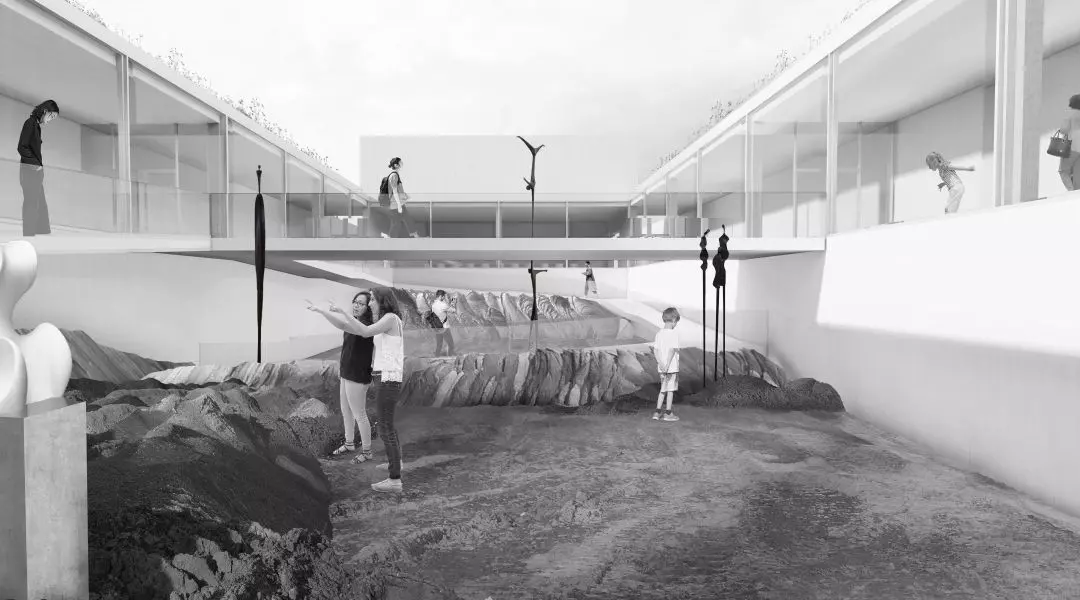Honorable mention (ex aequo) in the category of master's degree in
competition named after Prof. Zygmunt Majerski
author
Karolina Grzesista
promoter
dr Jan Kubec
university
Silesian University of Technology
author's description
The title Landscape of Transformation is the area of the Belchatow Lignite Mine, the largest open pit mine in Poland and one of the largest in Europe. In 2050, the process of flooding the pits with water will begin. In the year, which is the symbolic date of the end of the coal age, the post-mining areas of the KWB Mine will begin to disappear under the surface of the water. The area will once again transform - this time from degraded to rehabilitated. Belchatow Lakes will be created in place of the mine.
The measures introduced in the project can be divided into two types: stratified and point action. The former refers to the macro scale, these are urban planning decisions, consisting of minor interference in the existing landscape, pro-ecological action, focusing on improving the quality of the degraded environment, or even conscious decisions to designate areas excluded from project activities, places intended for self-sustaining processes.
On an architectural scale, the project involves a point action. This means the accumulation of public functions in one place, in the central part of the development. The designed volume was created as an element surrounding the road that crosses the surface of the lake. It has the form of a simple box, the geometry of which was broken by lowering and partially sinking its central part. Such an action made it possible to create a structure that is a "bridge" for the water. This provides a new bank and levels the scale of the designed architecture, which becomes a backdrop for nature reborn to life.
The project has reused steel from the removed conveyor belts and accompanying minerals. Functionally, the building was divided into three parts: the KWB Belchatow Museum, the Hermitage and the Nature Education Center, along with minor supplementary functions (restaurants, laboratories, cafes, etc.). The connecting element between the two buildings are the atriums, which in the Museum have been used to present on a micro scale the landscape of the Belchatow desert, while in the Educatorium they are filled with greenery. Around the building, an open exhibition of mining machinery (heapers and excavators) was proposed, frozen relics of a bygone era at work.
The designed volume creates the form of a broken line, symbolizing broken continuity. The two parts of the building, one dedicated to the site's post-industrial past and the other referring to its pro-environmental aspirations, are united by water, which, as an element present during the formation of coal and then pumped during mining, closes the natural cycle of the site, being at the same time the language of its transformation.
































